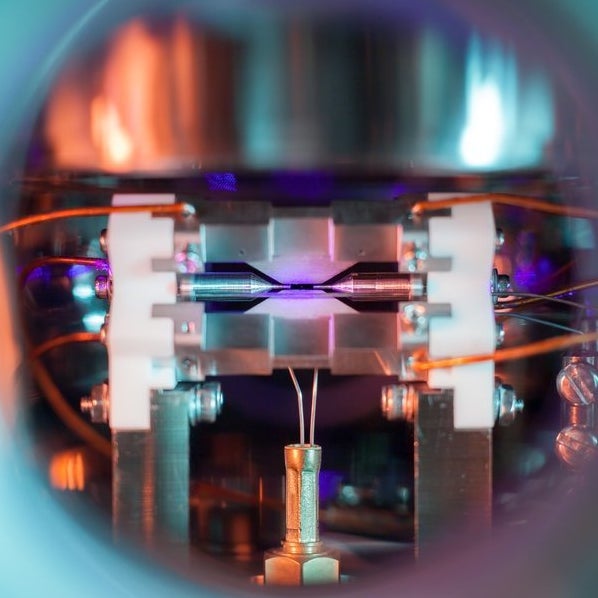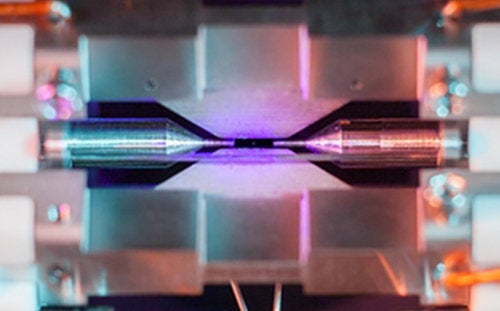
An Oxford University student who captured an image of a single atom has won a top science photography prize.
David Nadlinger captured the winning photo of an atom suspended between electric fields using a standard digital single-lens reflex camera, the council that organized the U.K. photography competition announced on Monday.
“The idea of being able to see a single atom with the naked eye had struck me as a wonderfully direct and visceral bridge between the miniscule quantum world and our macroscopic reality,” Nadlinger said according to an Engineering and Physical Sciences Research Council press release.
“A back-of-the-envelope calculation showed the numbers to be on my side, and when I set off to the lab with camera and tripods one quiet Sunday afternoon, I was rewarded with this particular picture of a small, pale blue dot,” he added.
Nadlinger, a Ph.D. student in physics, traps atoms as part of his research on quantum computing at Oxford’s Clarendon Laboratory. Atoms are incredibly small, but he used a few tricks to make the atom visible to the human eye in a photograph.

The researcher first turned the atom of strontium, the 38th element on the periodic table, into an ion ― an atom with a positive or negative net electric charge. Nadlinger then used currents that four needle-shaped electrodes emitted to isolate and suspend the ion. He illuminated it with a blue-violet colored laser and took the photo through the window of a vacuum chamber, using an exposure time of 30 seconds.
The pale dot that Nadlinger captured is not the true size of the strontium atom, however. The atom is actually re-emitting the light from the lasers to create a glow that is hundreds of times wider than its radius.
“I think people are ... surprised by how big the atom looks here,” Nadlinger told LiveScience. “I hope I’m not undoing 100 years of science education with this photo — atoms actually are unbelievably small!”
The research council received over 100 entries this year for its fifth science photography competition. Other winning images included a colorful close-up photo of spherical soap bubble about to burst in a kitchen sink and a photo of a volunteer wearing a headset that records brain activity while walking along a road in Edinburgh, Scotland.

